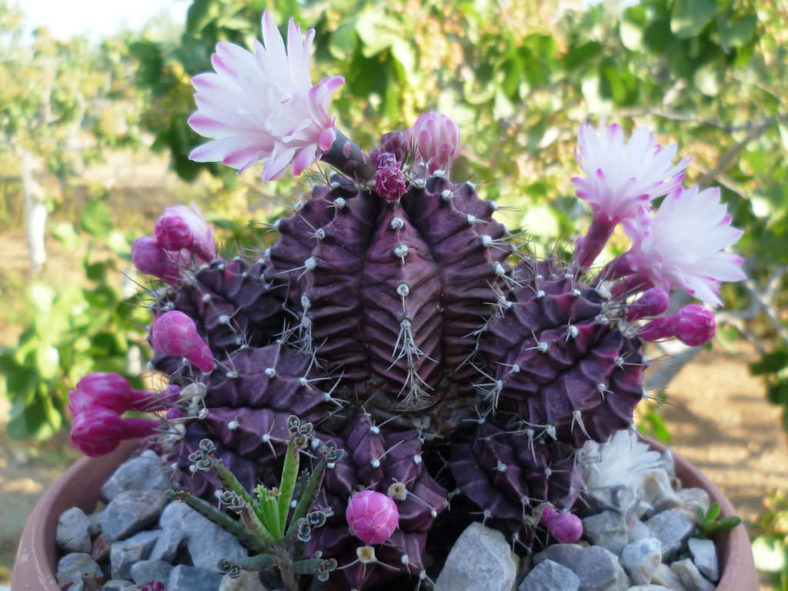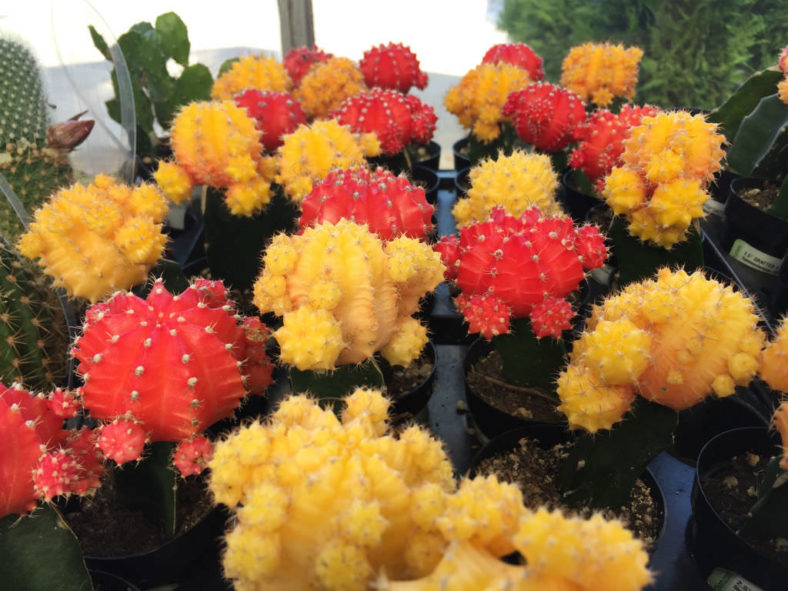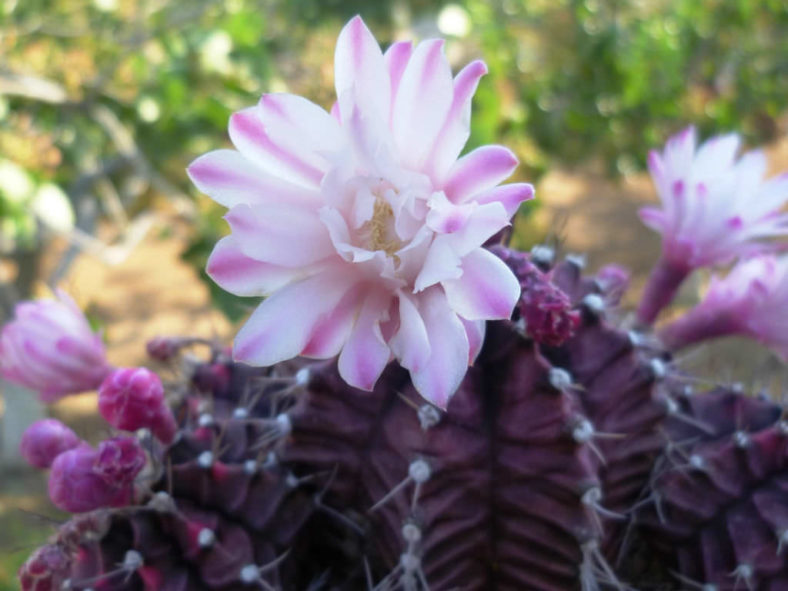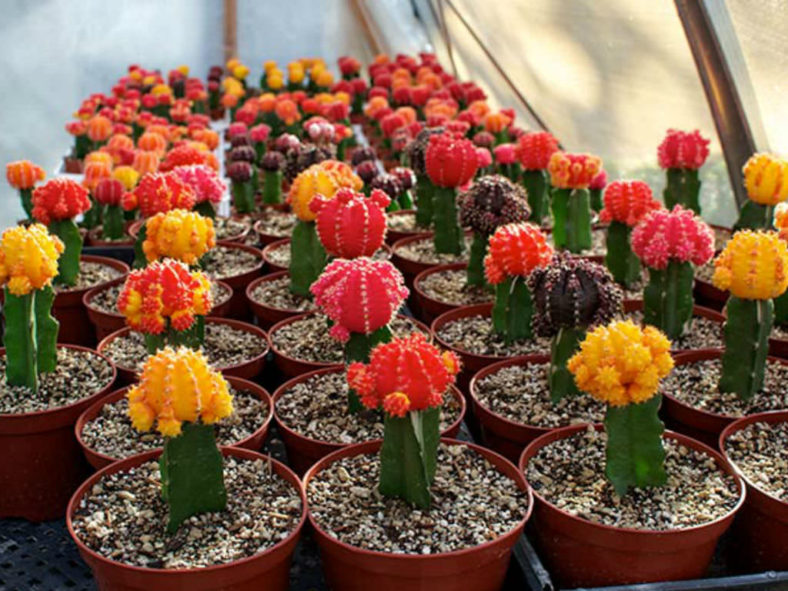Scientific Name
Gymnocalycium mihanovichii 'Hibotan'
Common Name(s)
Hibotan, Red Cap Cactus, Red Hibotan, Ruby Ball
Synonym(s)
Gymnocalycium friedrichii 'Rubra', Gymnocalycium mihanovichii var. friedrichii f. rubra, Gymnocalycium mihanovichii var. rubrum, Gymnocalycium mihanovichii f. rubra
Scientific Classification
Family: Cactaceae
Subfamily: Cactoideae
Tribe: Trichocereeae
Genus: Gymnocalycium
Origin
A large group of popular cultivars of Gymnocalycium mihanovichii with stems that lack chlorophyll.
Description
Gymnocalycium mihanovichii 'Hibotan' is a beautiful small cactus with usually red but also orange, dark purplish, yellow, or even white stems. The seedlings of these chlorophyll-deprived cacti are grafted onto fast-growing cactus, usually Hylocereus, a base plant that provides the necessary chlorophyll for the upper plant to thrive. The stems are globose to subglobose, up to 4 inches (10 cm) tall and 5 inches (12.5 cm) in diameter, often producing numerous offsets. They have 8 to 14 deep ribs lined with clusters of spines and with roller-shaped thickening around areoles. Each areole bears 3 to 6 dark brown, up to 0.4 inches (1 cm) long radial spines. The central spines are usually unsent.
The flowers are funnel-shaped, pale-pink to purplish-pink, up to 3 inches (7.5 cm) long, and appear in summer. Fruits are gray-green to pinkish-red, up to 1.6 inches (4 cm) long, and up to 0.4 inches (1 cm) in diameter.

Hardiness
USDA hardiness zones 9b to 11b: from 25 °F (−3.9 °C) to 50 °F (+10 °C).
How to Grow and Care
Some Gymnocalyciums are shade-seeking in the wild, among shrubs or grasses, while others grow completely exposed. Therefore, some will need light shading from the sun in the hottest months, but to overdo this will result in the loss of flowers.
The balance of the potting medium should be sufficient to allow good drainage so that the plants do not sit in soggy soil for more than a day or two after watering.
While the plants grow well in the summer, watering can be frequent (weekly for small plants in small pots), but always allow the soil to dry out nearly before rewatering. Watering in the winter months is certainly not necessary. The difficult times are spring and autumn.
Those species that produce offsets can be readily propagated by cuttings. The seeds germinate well when fresh and will keep for a few years if stored in cold conditions.
See more at How to Grow and Care for Gymnocalycium
Graft-chimeras
Links
- Back to genus Gymnocalycium
- Succupedia: Browse succulents by Scientific Name, Common Name, Genus, Family, USDA Hardiness Zone, Origin, or cacti by Genus
Photo Gallery
Click on a photo to see a larger version.


